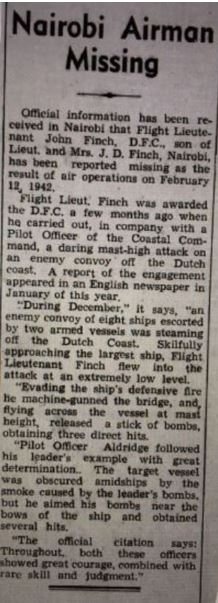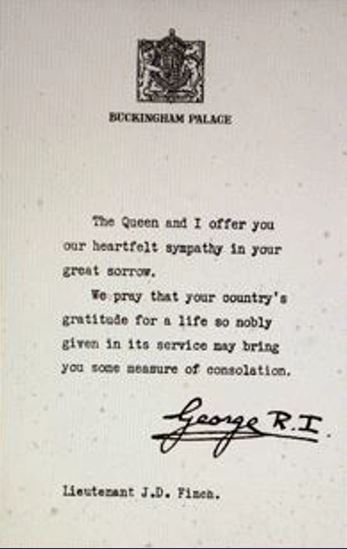including an examination of
The Concept of Colonial Discrimination
Ralph Manning was born in Vancouver, B.C., Canada on September 16, 1916. He graduated from Cranbrook High School and earned a degree at the University of British Columbia. After six years as a clerk and accountant he enlisted with the RCAF on September 25, 1940.
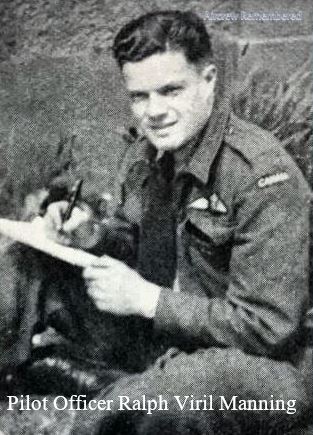
On completion of flying training he was promoted to Sergeant and posted to RAF Overseas on August 7, 1941. He was promoted to Flight Sergeant after completing the course at No. 5 Operational Training Unit and joined No. 42 Squadron on January 8, 1942. His operational career would not be dull. He would be one of the fortunate few to survive the war.
After receiving his commission on May 31, he was posted to the Middle East with his squadron on September 5, 1942. Promotion to Flying Officer followed on November 30, 1942.
After conversion to Bisley aircraft he participated in the bombing support of the first Wingate expedition. On May 1, 1943 he was posted to No. 217 Squadron and promoted to Flight Lieutenant on July 31, 1943. Between December 17, 1943 and January 15, 1944 he was attached to Royal Navy Air Station, Colombo, tasked with instructing Fleet Air Arm pilots in twin engine aircraft. He was promoted to Squadron Leader, April 29, 1944 and embarked from Ceylon as Officer Attending to Italian POWs. S/L Manning was repatriated to Canada July 11, 1944.
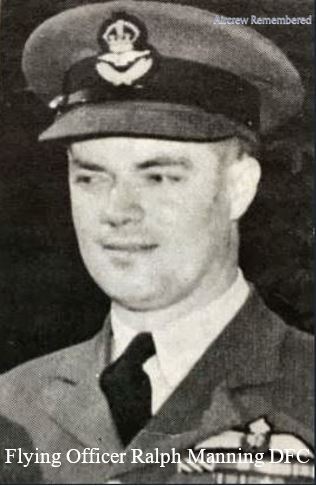
Between August 1944 and June 1946 he had numerous postings and courses including: Western Air Command, Senior Administrative Course (Trenton), No. 122 Squadron (Patricia Bay), No. 3 Repair Depot, No. 8 Release Centre (Vancouver) and Western Command Headquarters. On October 1, 1946 he reverted from Acting Wing Commander to Squadron Leader on taking a permanent commission.
His peacetime service included postings to the Institute of Aviation Medicine (personnel selection research), RCAF Staff College, Instrument Flying School (Centralia), Air Defence Command (St. Hubert), RCAF Staff College Directing Staff, RCAF Support Unit, NORAD Headquarters (Colorado Springs) and finally AFHQ as Air Historian.
Wing Commander Manning retired from the RCAF September 2, 1965 after a stellar military career. It was most fitting that he served as the Deputy Director, Canadian War Museum, 1966-1982.
He died in Ottawa, February 8, 1994, age 78. His medals and other memorabilia are on display at Canadian War Museum.
Ralph Manning’s operational career is summarized in the citation for his Distinguished Flying Cross, but it does not tell the whole story:
MANNING, F/L Ralph Viril (J15633) - Distinguished Flying Cross - No. 217 Squadron - Award effective 29 February 1944 as per London Gazette dated 7 March 1944 and AFRO - 766/44 dated 6 April 1944. Flight Lieutenant Manning has taken part in several torpedo bomber attacks with good results. In April 1942 he participated in an attack on an enemy convoy in the Skagerrak, and in May 1942 he was pilot of a formation of aircraft which penetrated the heavy defences around the “Prinz Eugen” off Norway and made a successful attack on the cruiser. On this occasion his aircraft sustained severe damage. In October 1942, Flight Lieutenant Manning destroyed an enemy tanker, which was of the utmost importance to the enemy. On a recent sortie he was forced to bring his aircraft down on to the sea. The dinghy failed to operate and Flight Lieutenant Manning gave great help and encouragement to his crew, two of whom were non-swimmers, while they were in shark-infested waters. He has at all times displayed exceptional valour and determination on operations.
Ralph Barker, in his book The Ship-Busters, The Story of the R.A.F. Torpedo-Bombers, with exquisite detail chronicles the combat history of these brave young airmen. During the early years of the war, while flying Coastal Command Beauforts, they sustained losses as horrific as those by the rookie crews of Bomber Command—closing in on eighty percent! Those early years and the progress of Fl/Sgt. Manning’s operational career are the highlights of this book. He experienced his share reversals along the way.
THE CHANNEL DASH - FEBRUARY 12, 1942
By February 1942, Prime Minister Churchill and British High Command, were focused on the pending breakout threat of Prinz Eugen, Scharnhorst and Gneisenau from Brest harbour. In anticipation, the Beauforts of No. 42 Squadron were staged early on the morning of February 12th from Leuchars (located some 8 miles south of Dundee, Scotland) to the fighter airfield at Coltishall. In conditions of low cloud and rain, F/Sgt. Manning was unable to find the field. In his defence, due to a shortage of maps, he and his crew departed without them and in reduced visibility became separated from the rest of the Squadron.
Meanwhile under cover of darkness and deteriorating weather, the three German capital ships with an escort of seven destroyers, had slipped out of Brest harbour. There was initial scepticism when this catastrophic event was first confirmed by a Spitfire pilot at 11.20 AM on February 12th. By this time the enemy ships had covered over 300 miles and were passing Beachy Head into the Straits of Dover! What was to become known as The Channel Dash was almost over before it began.
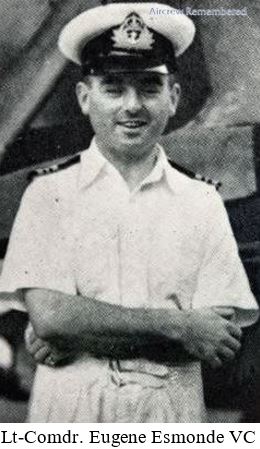
Incredibly, the initial task of attacking this German juggernaut was handed to Lt.-Comdr. Eugene Esmonde DSO MiD, and the six Swordfish crews of No. 825 (Fleet Air Arm) Squadron. Aged 33, with 6,500 hours logged flying hours, surviving the first torpedo attack on the Bismark and the torpedoing of HMS Ark Royal by the Germans, whilst he was aboard — he showed no hesitation in leading this near-suicidal attack. Despite being set on fire by repeated attacks from FW 190s and Me 109s, Lt.-Comdr. Esmonde was able to release his torpedo before crashing into the sea. From the remaining two crews of Esmonde’s vic there were two survivors, from Sub-Lt. Rose’s and Sub-Lt. Kingsmill’s crews, three POWs. Sadly, from the second vic there were no survivors.
Lt.-Comdr. Esmonde was justifiably awarded a posthumous V.C. The four surviving officers were awarded the D.S.O., the sole surviving air-gunner the C.G.M. The remaining twelve men who lost their lives were mentioned in dispatches. That evening, Sub-Lt. Edgar Lee, Rose’s observer, was the only survivor to return to their Base at Manston, a very lonely man. The Squadron’s six Swordfish aircraft were resting on the bottom of the Straits of Dover, defeated but not shamed.
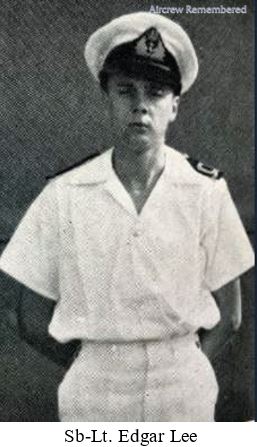
Despite the heroics of the No. 825 Swordfish, the German fleet steamed full speed towards the North Sea, unscathed. The clock was ticking and the window of opportunity rapidly closing.
The next attack would be mounted by the Beauforts of No. 217 Squadron from the base at Thorney Island, led by acting C.O., S/L George Taylor DFC, AFC. Seven aircraft departed at 13.25, armed with a weapon mix of torpedoes and bombs, detailed to attack 'three big enemy merchantmen in the Channel'. During the ensuing encounter, F/L ‘Ginger’ Finch DFC (see below for a biography of this airman) was observed to be right in close before unleashing his torpedo on the Gneisenau. He and his crew were never seen again.
Around the time of this attack the Scharnhorst, forced off track, struck a mine. With significant damage she came to a temporary standstill. Remarkably, this would be the most significant blow to the entire breakout.
The third strike force, comprised of nine Beauforts of No. 42 Squadron, departed Coltishall between 14:20 and 14:30. Eight attacked with two being lost to Me 109 attacks.
'Results unobserved' - Coastal Command euphemism for a miss!
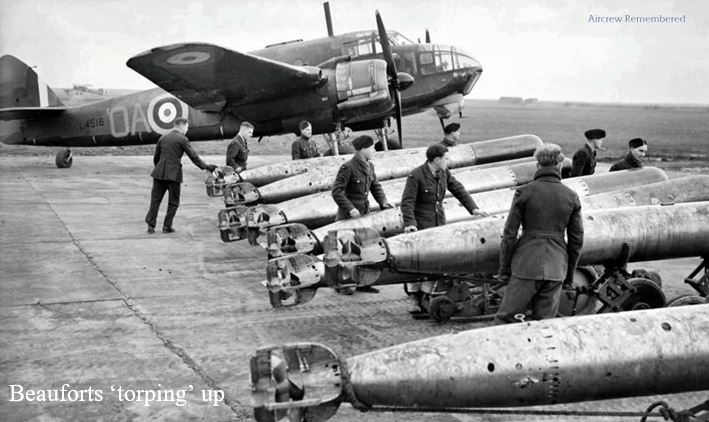
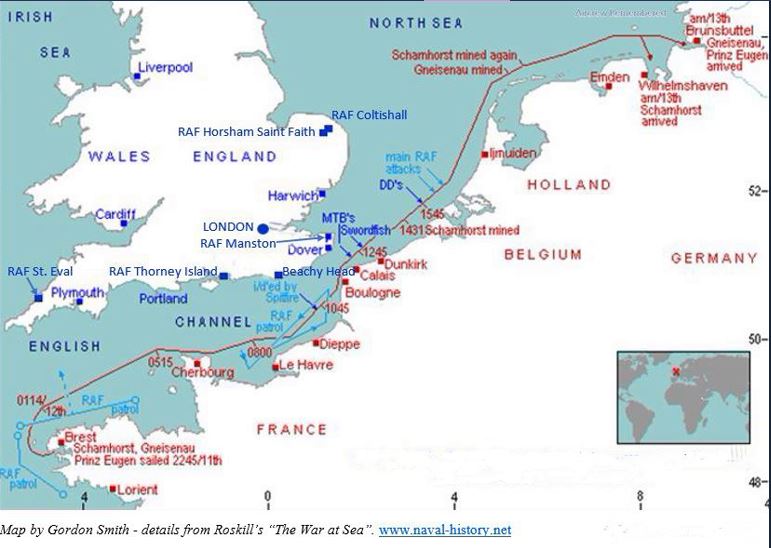
At this point despite the disorganized efforts of the squadrons of the Fleet Air Arm, Coastal Command and two hundred and fifty crews of Bomber Command, with the exception of the mine strike on the Scharnhorst, there had not been a single hit on the three capital ships.
A last ditch effort was launched from St. Eval at 16:00. This included a conglomerate of twelve Beauforts from Nos. 22, 86 and 217 Squadrons with orders to rendezvous with their fighter escort over Coltishall at 17:00.
In the interim, mapless and lacking the wireless verification tables for a DF (Direction Finding) steer, F/Sgt. Manning, after becoming separated from his squadron mates, had finally managed to put down at Horsham St. Faith near Norwich. The airfield was in disarray and the duty control officer provided him with the instructions: “Five minutes over there”. One hour later, after being redirected from three airfields, he finally arrived at Coltishall!
Here he was provided with a non-specific pre-op briefing: 'Follow 86 Squadron, go where they go and attack what they attack'. Manning was preparing to take off when 86 Squadron overflew the field and set course, disappearing into the ‘clag’. After a brief, fruitless pursuit he returned to Coltishall.
With failing light and reduced visibility, this attack was doomed to fail. Pilot Etheridge’s wireless operator was wounded by flak and he was forced to belly land on his torpedo. Pilots White, Mathewson and crews were lost without a trace.
It is noteworthy that the Scharnhorst would hit a second mine en route to Wilhelmshaven, putting her out of action for some months. Ironically, gardening (minelaying) would reap greater rewards than the entire efforts of the Fleet Air Arm, Coastal and Bomber Commands — not a single hit despite a multitude of sorties. The element of surprise, coupled with adverse weather, lack of communication and planning resulted in a near flawless breakout of the German capital ships. British High Command was left with egg on its face. Chaos and miscommunication ruled supreme. A Beaufort crew came within a finger of unleashing a ‘torp’ on a damaged British destroyer that was not supposed to be where it was. This was not a stellar day in the annals of the RN or RAF!
Gardening operations were utilized as a relatively low risk introduction of bomber crews to the challenges of a mission over enemy territory, involving night-time navigation, dropping a weapon and returning to base. However, the risk of flak and night fighters could not be ignored. Of 625 Squadron’s seventy-four losses, only one was attributed to a gardening op: LL894 with P/O R.E. Beadle and crew on 15/16.5.44. The entire crew was lost with the flight engineer’s body, Sgt. A.L. Dix, being the only one to wash ashore in Denmark. If not for the efforts and sacrifice of the aircrews from gardening missions, The Channel Dash escapade would have been flawless for the German High Command.
On May 17, 1942 a dual force of Beauforts with Beaufighter escorts were detailed to attack the Prinz Eugen, returning to Kiel after losing twenty feet of her stern and rudder to a torpedo, compliments of the submarine, Trident. W/C Williams would lead the Leuchars force of twelve Beauforts. His regular navigator, Andrews, grounded by the M.O. due to a bad head cold, was replaced by volunteer, tour expired, Canadian Al Morris.
The Prinz Eugen was located and attacked off the Norwegian coast. F/Sgt. Manning in the second wave was attacked head on by a Me 109. In the excitement he had neglected to arm his guns and missed a golden opportunity. After releasing his torpedo at 800 yards, a shell from the Prinz Eugen severed one rudder cable, rudder and elevator trim cables. At low level, fighting for control, he discovered that with full throttle on one engine and the other retarded he could maintain wings level. After fighting off a series of attacks by three Me 109s, manhandling a crippled Beaufort over 300 miles of the North Sea, he managed to pull off a successful crash-landing at Leuchars — only to be severely reprimanded by the station commander for blocking the runway!
The Prinz Eugen escaped without an additional dent but the crews of Coastal Command paid dearly. Included in the losses was W/C Williams, shot down with the loss of his crew, to become a POW aboard the ship he was obsessed to sink. Tour expired Al Morris would never return to his homeland. The fickle finger of fate in war.
ADVENTURES IN THE MED AND THE SINKING OF THE PROSERPINA
By the eve of 1942 the British strategic position in the Western Desert had deteriorated significantly with the Axis occupation of Greece and Crete and the Western Desert force being driven back to the Egyptian frontier. The enemy controlled the central Mediterranean with easy access to the North African ports, in particular Tripoli and Tobruk. However British control of centrally located island, Malta, continued to be a strategic dilemma for the Germans. As a result Rommel’s shipping routes were under constant threat of attack by medium range aircraft operating from her airstrips. The threat was of such a magnitude that the Germans siphoned off 600 aircraft from the Russian front to defend their convoys and obliterate Malta. This was the cauldron that the torpedo bomber crews found themselves in during ‘temporary’ stopovers in Malta and Egypt en route to Ceylon. Under the conditions of a siege they soon found themselves involved in repeated attacks on enemy convoys attempting to resupply Rommel’s army for an offensive to Egypt. Without essential supplies, in particular fuel for armour and aircraft, his plans would be futile. The battle for Malta reached a crescendo in April 1942.
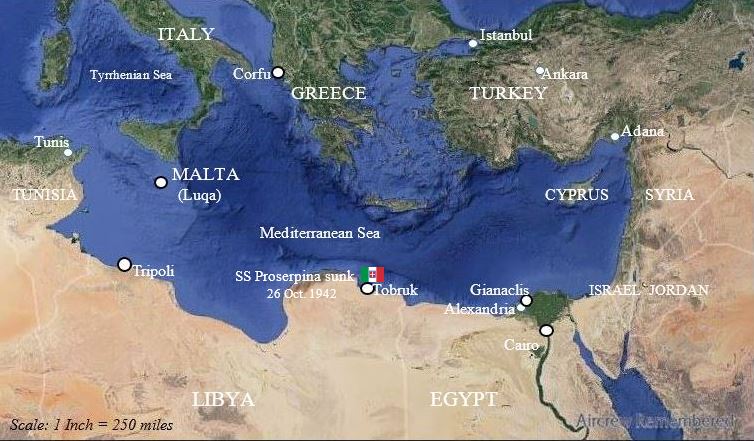
On April 13, 1942 Australian Johnny Landers led ten Beauforts of Nos. 22 and 39 Squadrons from Bu Amud near Tobruk in an attack against a convoy. Three explosions were observed in two of the ships attacked. On the return leg to Malta, a running battle ensued with a hundred plus enemy force of Me 109s, Me 110s and Ju88s, with numerous Beauforts being shot down into the sea. This included Captain/Pilot Seddon and his crew, ditching six miles from Malta. Two crew were injured, the dinghy holed and would not inflate. Injured Canadian McGregor and gunner Miller set out to swim to Malta. Five hours later, stripped naked with an Egyptian pound note gripped in a fist, McGregor reached the cliff face of Malta. After spending the night naked on a ledge he was rescued the next day by an air-sea rescue launch, pound note intact. His crew mates were lost without a trace. Of the thirty-six crew men that set out from Bu Amud, seventeen failed to reach Malta. Johnny Lander managed to pull off a crash-landing while being attacked by Me 109s.
McGregor recovered from his injuries, was posted to a ‘safe role’ on Sunderlands only to lose his life soon afterwards in a take-off accident!
W/C Patrick Gibbs arrived at Malta on April 23, 1942. In time he would dramatically modify the strategy of torpedo warfare that would increase the success rate and reduce the losses.
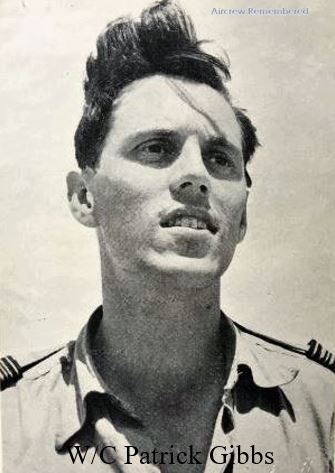
On July 28, 1942 W/C Gibbs would lead a convoy strike near Sapienza in Southern Greece that resulted in an incident that typified the courage, initiative and morale of the Beaufort crews. During the attack, two Beauforts were shot down with the crew of South African Lieutenant Ted Strever being rescued by a Cant Z.506B floatplane. After spending the night at the Greek port city, Preveza, they were loaded into a different Cant aircraft for the flight to a German POW camp in Taranto, southern Italy. Early in the flight Lt. Strever and his crew decided to skyjack the aircraft. They overpowered the wireless operator, seizing his revolver. A Mexican standoff resulted with Lt. Strever and the Cant pilot staring down the barrels of their respective weapons. This came to a dramatic conclusion when the Italian flight engineer blocked his pilot’s line of fire, allowing them to charge their captors, seizing control of the situation and Lt. Strever flying back to Malta. Nearing the island, they were intercepted by three Spitfires intent on shooting them down. A white vest waved to indicate surrender was ineffective. Lt. Strever vacated the pilot’s seat indicating that he wanted his Italian counterpart to land on the sea in surrender near their base at Luqa. The Italian pilot, on taking control, immediately retarded the throttles causing the attacking Spit to miss the fuselage as he overshot his target. The landing was successful without injury to the Beaufort crew and now Italian POWs.
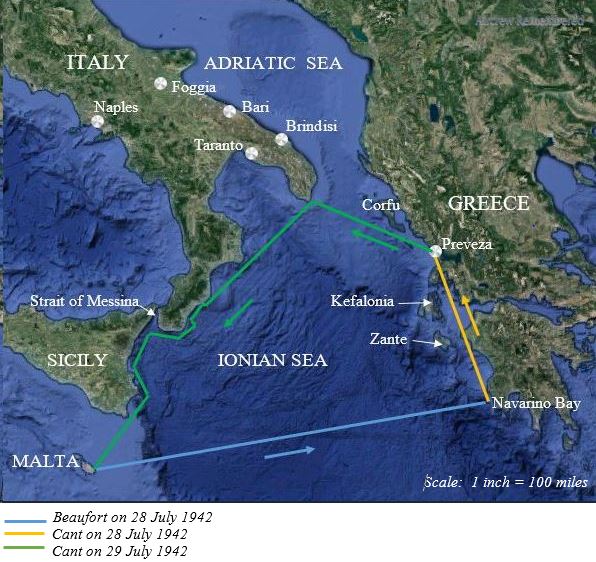
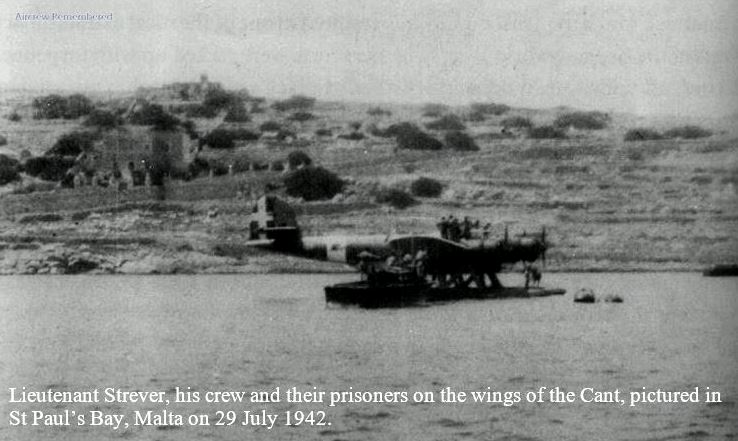
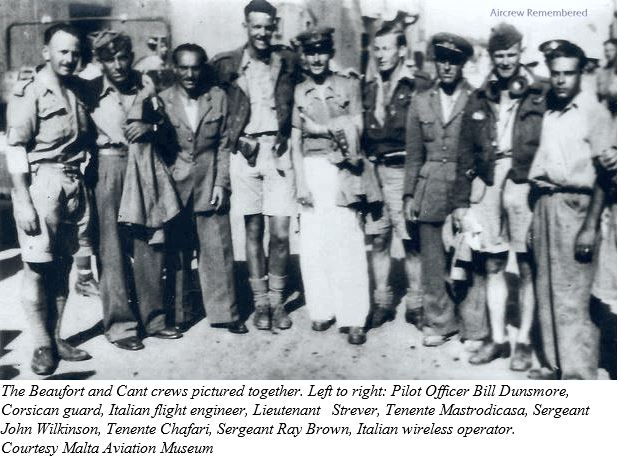
Fortuitously, the Italian crew was about to go on leave and had stuffed their suitcases with a supply of wine and booze. This fuelled the resulting celebration and Lt. Strever focused on retrieving his clothing and personal effects that his squadron mates had ‘inherited’ when he was posted missing the previous day. Arthur Aldridge in his book, The Last Torpedo Flyers, notes that this escapade was “quite a morale-booster”. This particular aircraft became famous as the only aircraft in the Western Front skyjacked by POWs. Following repairs it was pressed into service with the RAF in Malta.
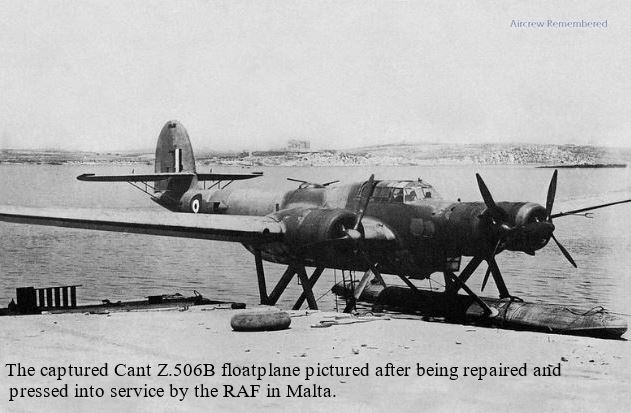
On October 25, 1942 W/C Sprague, the new commanding officer, led a formation of four Beauforts, four Bisleys and six Beaufighters from an advanced strip at Gianaclis near Alexandria, to locate and attack a small freighter north of Tobruk. P/O Manning (now commissioned) described the attack on a small single-funnelled vessel, approximately 100-150 feet long, most likely an ‘F’-boat. He was the only one to return to base without dropping his torpedo and after landing was disdained by his ground crew. During debriefing he rationalized that the vessel was too small, most likely a launch. Photos taken by his crew confirmed that it had no superstructure and most definitely was not a freighter. Other crews noted that it was of such shallow draught that torpedoes passed under its stern and ended up sunbathing on the beach! P/O Manning was not popular with his senior officers.
At this time an enemy convoy was being observed closely as it steamed towards Tobruk. It included two merchant vessels and the 6000 ton tanker, Proserpina, critical to Rommel’s days old offensive. By October 26, 1942 it was within range of the Beauforts at Gianaclis.
The Group Captain gave this important strike briefing, emphasizing that the tanker was the primary target and had to be destroyed at all costs. He noted that the convoy was last reported twenty miles north-west of Tobruk and was being escorted by three destroyers and two Ju88s. To make matters worse, at the predicted time of attack it would be within range of shore based Flak and fighters.This strike would include all available aircraft of 201 Group, consisting of eight Beauforts of Nos. 42 and 47 Squadrons, six Bisleys of No.15 Squadron and six Beaufighters. Take-off commenced at 12.30 in perfect weather and after a two hour flight the convoy was located off Tobruk, including three destroyers, a small freighter and a larger merchant vessel. The latter was taken for the tanker and the strike leader initiated the attack. All crews followed his example with the exception of Manning, Hearn-Phillips, a second tour vet, and two Bisleys. Suspicious of a decoy, they continued along the coast and in short order located the missing tanker escorted by a destroyer.
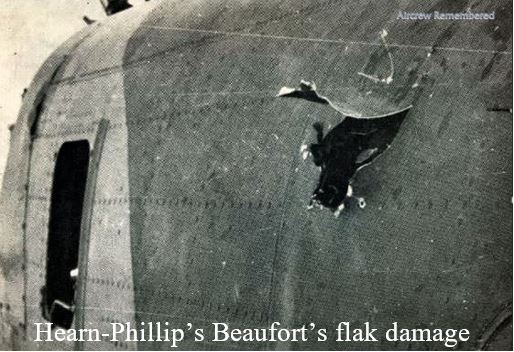
At this time Hearn-Phillips asked his wireless operator, ‘Ginger’ Coulson, to come forward to photograph events. No sooner had he vacated his position than a flak fragment from the destroyer penetrated the fuselage passing from port to starboard and in the process exited through the electrical panel. Had he been at his seat, Coulson would have been decapitated! The electrical failure resulted in Hearn-Phillips prematurely dropping his torpedo and later ramifications.
P/O Manning manoeuvered through intense destroyer flak and shore batteries barrage as the tanker took evasive action in an attempt to ‘comb’ his torpedo. He launched his ‘torp’ at an estimated range of 600 yard and while pulling up was hit by explosion debris from delayed action bombs dropped by the two Bisleys. Fighting to regain control he was unable to observe the results of his attack. His squadron mates, who had flown decoy attacks to draw enemy fire, watched spellbound as his torpedo struck a glancing blow off the bow and slithered harmlessly along the hull, only to explode at the stern with a catastrophic plume of water and smoke. The Proserpina was doomed. The photo by ‘Ginger’ Coulson captured the moment, freezing in time the death knell of Rommel’s offensive and his military career.
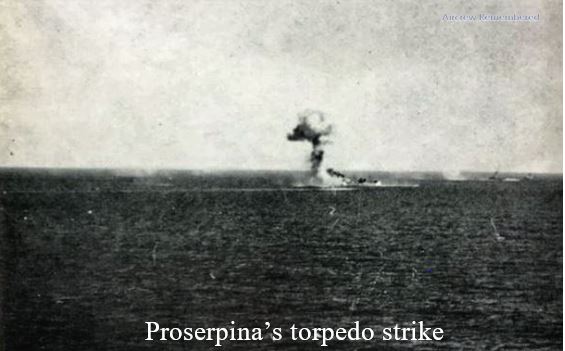
The strike force’s return to Gianaclis was harried by a series of lukewarm attacks by Macchi 202 fighters. Hearn-Phillip’s electrical failure would prevent his gunner from fending off these attacks and would prevent him, as the sole witness, from transmitting a warning of an impending collision between an erratically flown Bisley and a Beaufort—the end result being two crews crashing into the sea with the loss of all on board.
In the aftermath, on November 2, 1942, the leader of the Beaufort force, ‘Auntie’ Gee and two Bisley pilots, Pidsley and Yudelman and Pidsley’s navigator, Lithgow, were awarded DFCs.
'Manning, inexplicably, received no award at the time; but several months later, following a successful ditching in the Indian Ocean in which he gave great encouragement to his crew, he too was awarded the DFC.' Ralph Barker in The Ship-Busters. In fact, it would be sixteen months before he was recognized for his actions.
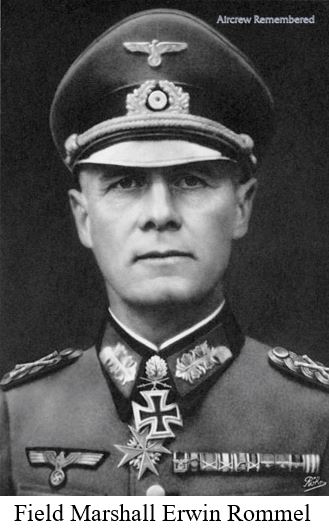
'It had been a devastating blow for Rommel. The last chance of a substantial delivery of fuel and ammunition before Montgomery struck, had gone.' Ralph Barker in The Ship-Busters.
On October 23, 1942, three days before the sinking of the Proserpina, Field Marshal Erwin Rommel launched the initial attack of the Second Battle of El Alamein. By October 30th he was facing a fuel crisis and his tank force decimated to 90 compared to the Allies 800. He requested orders to withdraw to Fuka and received the following orders from Adolf Hitler: 'There can be no other thought but to stand fast, yield not a yard and throw every gun and man into the battle…As to your troops, you can show them no other road than that to victory or death.'
Rommel thought that this order:
'Demanded the impossible…We were completely stunned, and for the first time in the African campaign I did not know what to do. A kind of apathy took hold…'
By November 4th, with a 19 kilometre hole in the front, overpowered, threatened with encirclement and no reserves, he realized that the situation was desperate. In the subsequent retreat he was forced to abandon the Italian infantry formations. The Allied advance was slowed by waterlogged ground and fuel shortages.
On the morning of November 11 1943, the 5th New Zealand Infantry Brigade captured the Halfaya Pass, taking 600 Italian prisoners in the process. By nightfall the Egyptian wall was clear. El Alamein was a victory.
In response Prime Minister Churchill noted:
'It may be said — Before Alamein we never had a victory. After Alamein we never had a defeat.'
The Tunisian Campaign (Battle of Tunisia) commenced with Operation Torch on November 8, 1943 with the landing of Allied forces in Algeria. Their goal was to advance 800 kilometres to the east to meet up with Montgomery’s forces pushing west, ensnaring the Axis forces in the process. The Germans were forced to resort to an armada of air transports, including the mammoth Me 323 Giganten, to supply ammunition, petrol, armour, reserves and evacuate the wounded. For many it would be a one way trip as these lumbering behemoths were easy prey for Allied fighters.
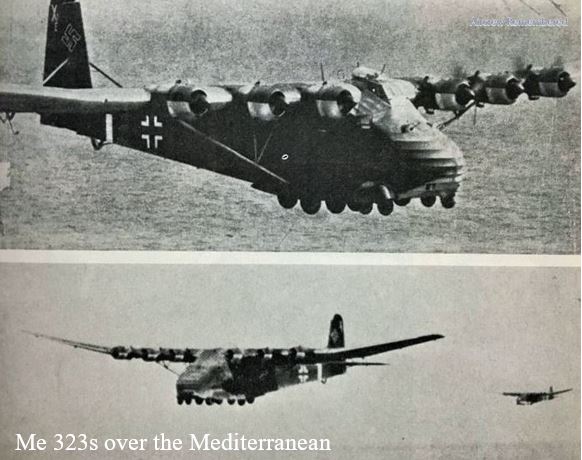
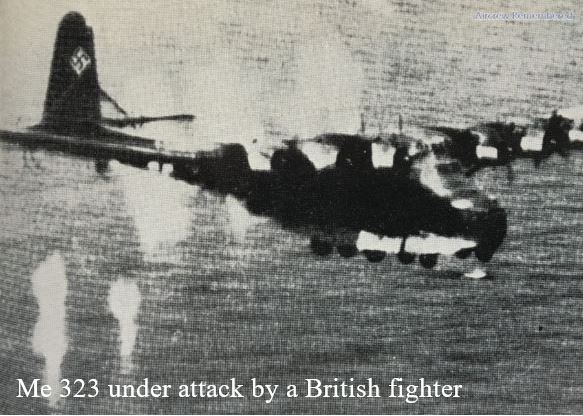
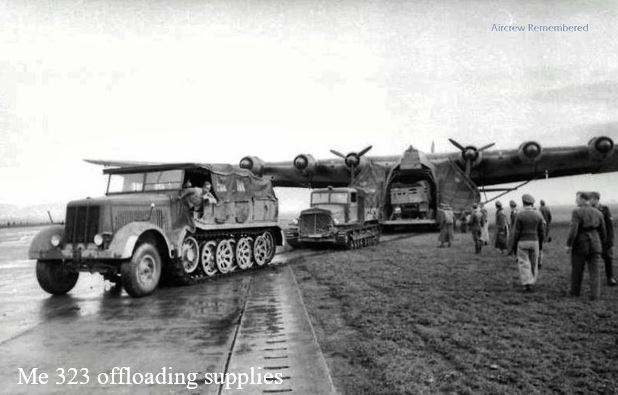
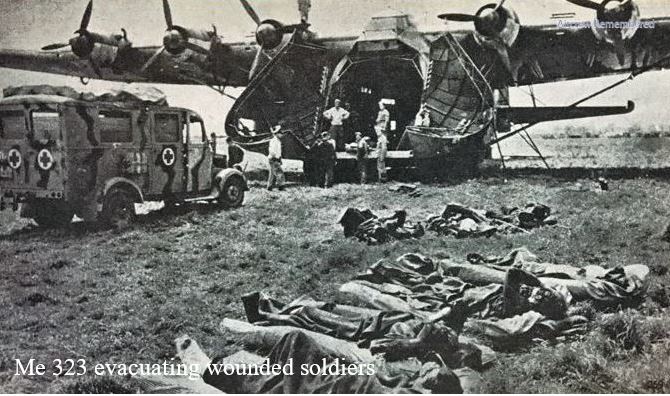
This campaign included the Battle of Kasserine, February 19-22, 1943 and culminated with the Axis surrender between May 8 and 12, 1943. In the process over 230,000 Germans and Italians found themselves POWs, including almost the entire Afrika Korps.
This would be a catastrophic defeat for the Axis powers—payback time for Dunkirk. The losses would be lopsided favouring the Allies with 76,020 casualties, 849 aircraft destroyed and over 340 tanks lost - compared to the Axis with 290,000-363,000 casualties, 238,000-300,000 POWs, over 2,422 aircraft destroyed, over 600 captured, over 450 tanks lost, over 1,000 field guns and thousands of trucks captured. The aircraft lost between November 1942 and May 1943 amounted to 41% of the Luftwaffe strength! Between March 29 and 21 April, 270 aircraft were destroyed, including almost the entire remaining air transport fleet.
Following the progress of the Western Desert campaign from Al Alamein in Egypt to its conclusion in Tunisia in May 1943, there can be no doubt that the Axis collapse can be attributed to strategic paralysis due to a fuel crisis. In retrospect, the torpedo that P/O Ralph Manning saved for a rainy day, to send the Proserpina to the bottom of the Mediterranean was the game changer. If she had reached Tobruk and her cargo distributed to Axis tanks and aircraft the outcome might have been quite different. It is not beyond reason to project Rommel’s breakout offensive to capture Egypt, control the Suez Canal, the Middle East with its oil reserves. He most likely would not have been wounded in the attack by an Allied fighter or forced to commit suicide by cyanide for his participation in the attempted assassination attempt on Adolf Hitler. The final outcome of the war may not have changed but there can be no doubt that it would have been prolonged with greater loss of life on both sides.
It is incomprehensible that P/O Manning was not decorated immediately or with the other officers involved in the attack on the Proserpina. Ralph Barker, the author of The Ship-Busters was incredulous that he was overlooked at this time for decoration. Under the circumstances with his combat wisdom, perseverance and courage to carry out the solo attack that resulted in the sinking, one would have expected that he be awarded an immediate DFC or even a CGM. If he had lost his life in the process, the VC. However, it was not to be. Perhaps due to the fact that he was a rebellious Canadian who had the temerity the previous day to tell his Senior Officers the truth. In the same vein, one has to question the lack of recognition of the wounded Canadian airmen who swam five hours to reach Malta and the South African pilot and his crew who skyjacked an Italian floatplane to return to Malta and the fray of war. Would they have been treated differently if they were British subjects in the RAF?
BIOGRAPHY OF F/L. Arthur John 'GINGER' Heneage Finch DFC
(See: Channel Dash above)
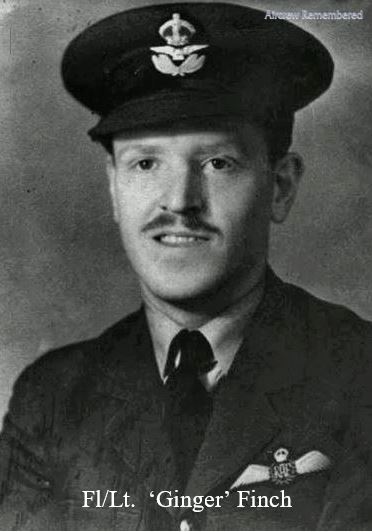
'Of all the men of the Beauforts who attacked the German ships that day, ‘Ginger’ Finch was perhaps the most adventurous, the most audacious, the most impulsive, the most contemptuous of danger. Only a few weeks before, with Aldridge, he had won the D.F.C. in a bombing attack on a powerfully escorted convoy of eight merchant vessels off the Dutch coast. Finch had been leading a formation of three aircraft of which Aldridge had flown No. 3. Going for the largest ship, Finch machine-gunned it on the way in, released four bombs from mast height and scored direct hits with three of them, being himself badly shaken by the explosion of his own bombs.…When the ground crews heard that the German warships were out, they said that if anybody got them, it would be ‘Ginger’ Finch. And the ground crews knew.' - The Ship-Busters by Ralph Barker.
Decoration Suggestion: VC, CGM or at least the Bar to his DFC.
Flight Lieutenant Arthur John (Ginger) Heneage Finch DFC - 1915-1942.
John Finch, (my uncle) was born in England in 1915. At the onset of WW I, his father, John Douglas, sent his mother, Jess (Wallis), and his older sister (Beryl) and twin brothers (Barney & Guy) to the safety of Britain. Guy was my father. After the war, the family returned to Kenya. There they attempted farming at various locations on the Kenyan plateau but eventually settled in Nairobi where his father practiced law. John attended school there.
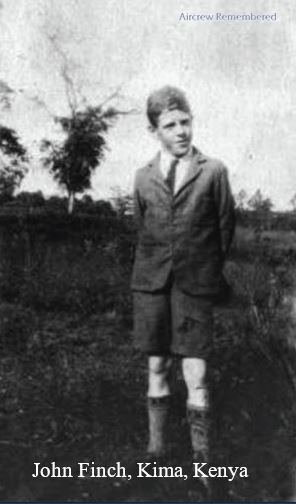
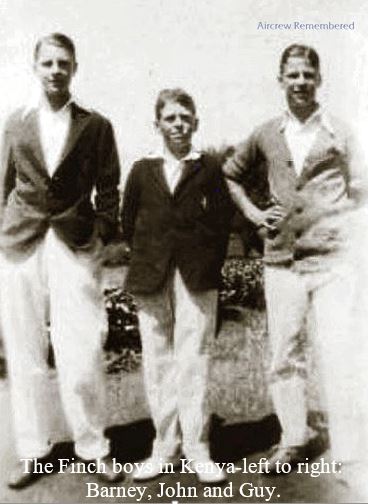
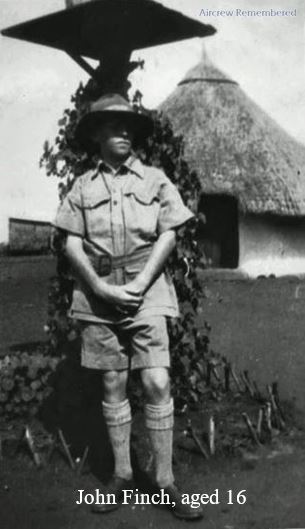
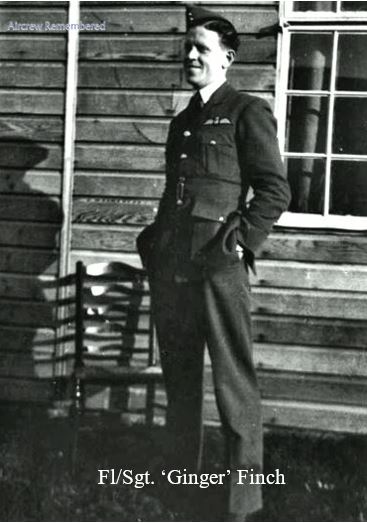
Nairobi Air Show
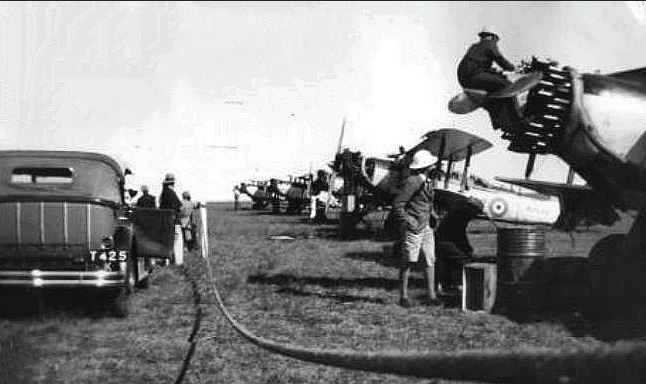
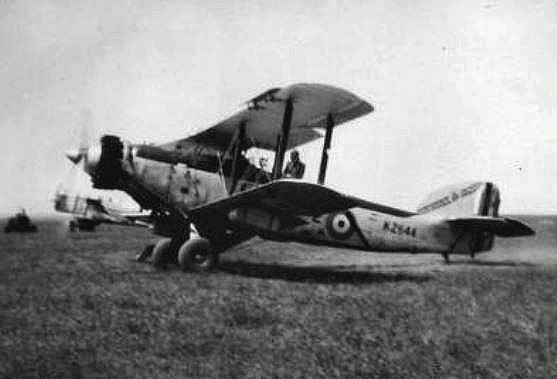
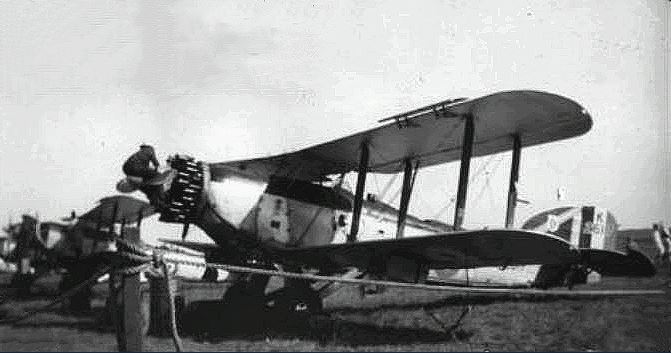
Perhaps influenced by several air shows in East Africa, he became interested in flying. He took training in England with the RAF and in July 1937 received his wings and granted a short service commission on 12 July 1939 (London Gazette 27 July 1937).
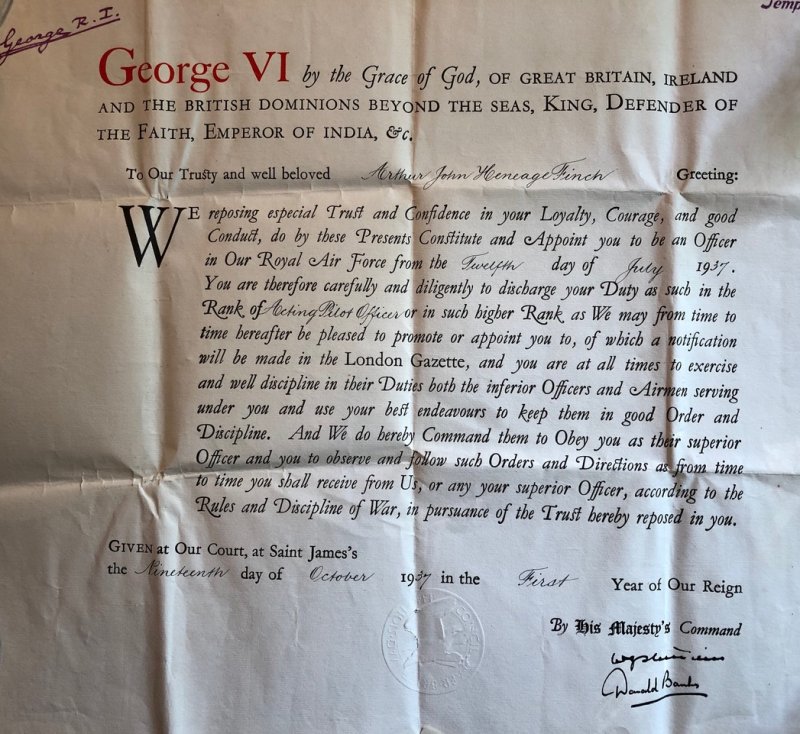
His first squadron is unknown but most of his active duty was with No. 217 Squadron, Coastal Command. At the onset of WWII, he was initially a flight instructor but eventually was assigned to Beaufort torpedo bombers and saw considerable action in the English Channel.
He was promoted to the rank of Flying Officer on 18 February 1940 (London Gazette 19 March 1940) and to Flight Lieutenant (war subs) on 18 February 1941 (London Gazette 16 May 1941)
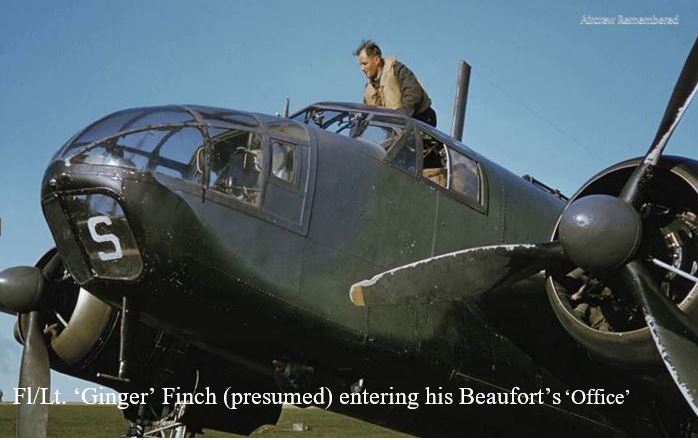
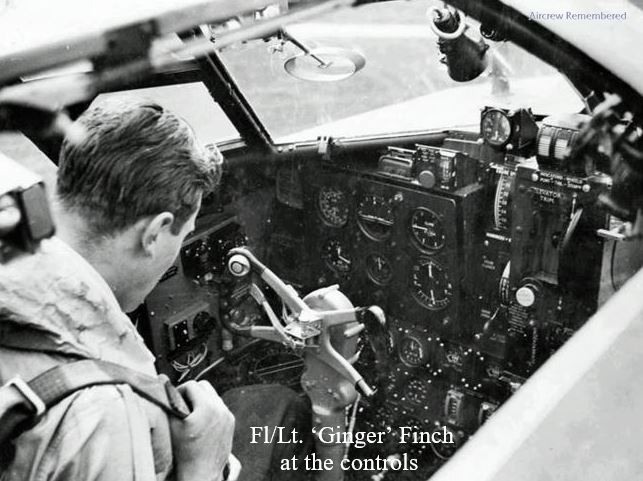
On 9 January 1942 he was awarded the DFC for his actions on 9 December 1941, in attacking an enemy convoy with P/O Arthur Aldridge (London Gazette 9 January 1942)
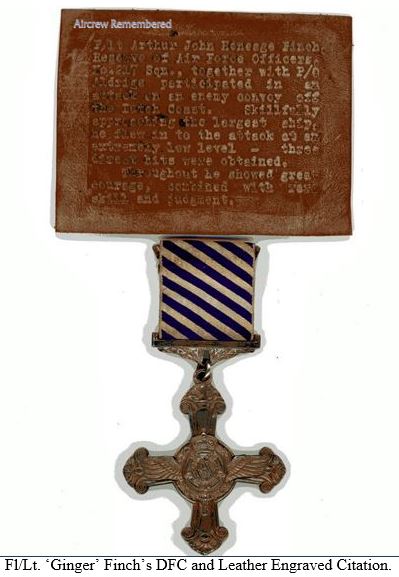
DFC Citation
Flight Lieutenant Arthur John Heneage FINCH (39937), Reserve of Air Force Officers, No. 217 Squadron.
Pilot Officer Arthur Harold ALDRIDGE (89819),Royal Air Force Volunteer Reserve, No. 217 Squadron.
One day in December, 1941, Flight Lieutenant Finch and Pilot Officer Aldridge participated in an attack on an enemy convoy of 8 ships escorted by 2 armed vessels off the Dutch coast. Skilfully approaching the largest ship, Flight Lieutenant Finch flew in to the attack at an extremely low level. Evading the ship's defensive fire, he machinegunned the bridge and, flying across the vessel at mast height, released a stick of 4 bombs; it is estimated that 3 direct hits were obtained. Pilot Officer Aldridge followed his leader's example with great determination and, as the target vessel was obscured amidships by the smoke caused by the explosions of his leader's bombs, he skilfully aimed his bombs nearer the bows of the ship and obtained several hits. In accomplishing this, Pilot Officer Aldridge flew so low that the wing tip of his aircraft was severed by the bracing wires of a mast. Throughout, both these officers showed great courage, combined with rare skill and judgment.
On 12 February 1942 he and his crew were shot down while attempting to torpedo the Gneisenau during The Channel Dash. In the London Gazette of 11 June 1942 it was promulgated that he had been Mentioned in Despatches, he is recorded as 'missing' against his name.
Despite being raised and educated in Kenya, he always considered England his home.
Several historical books mentioning ‘Ginger’ Finch have been written.
Chris Finch MD
MEMORIAL
Having no known grave, F/L. A.J.H.Finch is commemorated on the Runnymede Memorial, Panel 65.
THE CONCEPT OF COLONIAL DISCRIMINATION
I am most grateful to my classmate, Dr. Chris Finch, who provided me with the catalyst for this addendum to Aircrew Remembered archive report on 625 Squadron Loss ME684/ LMF/Criteria for Decoration Suggestions, by loaning me his family’s archival copy of Ralph Barker’s (1957), The Ship-Busters, and obtaining for me Arthur Aldridge’s and Mark Ryan’s, The Last Torpedo Flyers, he introduced me to the hairy, high risk combat flying of the early years of Coastal Command. Aldridge compares many of their shaky ops to those of Japanese kamikaze pilots, the only difference being that the Coastal Command aircrews did not depart with the intent of committing suicide. Time and space do not allow the recounting of the horrific conditions that these brave young men had to face to press home their attacks at low level, in daylight, abysmal weather and facing the overwhelming firepower of deck-guns and fighters. For this they must be read.
The accounts highlighted from both books support the concept of ‘colonial discrimination’ in recognition of courage in action. I am indebted to Dave Langner, my co-submitter of two Aircrew Remembered archive reports who introduced me to this concept. These reports described the loss of his two uncle’s, RCAF members KIA, who were not decorated and deserved to be. Aircrew Remembered archive reports for LL956 and PB413.
During my extensive research of 625 Squadron losses it has become apparent that in some situations a member of a crew fulfilled the criteria for decoration but was overlooked. These individuals are given special recognition with Decoration Suggestions in my archive reports, with the full realization that they will not be formally decorated at this late date but for the peace of mind of myself and surviving family members that their sacrifice was comparable to others who were formally decorated.
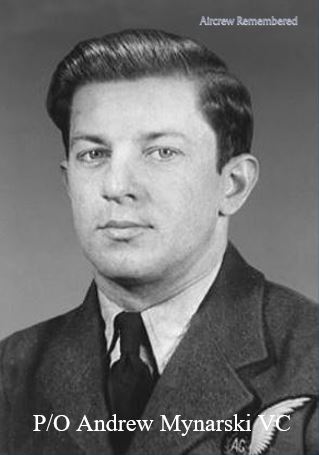
My gold standard for posthumous awards of the VC is the circumstances that resulted in RCAF mid-upper gunner W/O II Andrew Mynarski receiving the highest decoration for valour. After their Lancaster KB726 was engulfed by a hydraulic fire following a Ju88 attack, Skipper P/O Art de Breyne gave the order to abandon aircraft. W/O Mynarski observed that P/O Pat Brophy was trapped in his rear turret. With his clothing and parachute ablaze, he was unsuccessful with the fire axe and his bare hands to free P/O Brophy. At the urging of the rear gunner he made his way to the rear door, turned, stood at attention, saluted and mouthed their customary “Good night, Sir”, and baled out. He survived the descent but died shortly after from his burns and trauma from his accelerated descent. Incredibly, P/O Brophy survived the ‘controlled’ crash of their pilotless Lanc, to relate the heroics of his comrade. As a result P/O Mynarski was awarded the VC posthumously in 1946, the last one to be awarded to a Canadian in World War II. He was the only member of KB726 to lose his life. Fittingly, this was the crew’s thirteenth op!
It was not uncommon for members of a bomber crew to have a pact that they would not abandon a wounded or trapped comrade. The crew of a Lanc was divided in two by the main spar: the five up front and the two gunners in the rear. The latter were most likely to be isolated by fire or battle damage and faced with the grim reality that one may have to leave the other behind to go down with the kite. The agreement to rescue, protect or comfort a trapped or injured crew mate was not usually shared with the rest of the crew. On a few occasions a fit, mobile gunner was observed in a disabled bomber but when the dust settled, had failed to bale out successfully. It is impossible to know if he succumbed to fire and toxic fumes or elected to remain behind to attempt to rescue or comfort his comrade. Such was the case with the loss of 625 Squadron’s PB126, with the two gunners, F/Sgts. W.J. Adcock and R.E. Gledstone losing their lives. Surviving crew mates, in the moments before baling out had observed F/Sgt. Gledstone exiting his rear turret. There was no mention of F/Sgt. Adcock. The archive report for Decoration Suggestions will be amended to the VC for F/Sgt. Gledstone. The remainder will remain unchanged. (Note to AR Webmaster).
The five members of a Lanc crew forward of the main-spar were not as intimately linked as the two gunners. It was not a formal pact but the pilot and flight engineer often worked as a team during an operational flight. During start-up and on the take-off roll the flight engineer would operate remote switches and prevent throttle slippage. This was part of normal operational procedures for safety and comfort. However, during combat manoeuvers, especially in an aircraft with damaged controls, out of necessity the flight engineer had to contribute his strength to assist the pilot in maintaining control to return to base or enable the crew to safely abandon the aircraft. There are many eye witness accounts of surviving crew mates describing the last vision of their Skipper and flight engineer struggling with the control column, enveloped in flames, to provide them precious seconds to dive through the nose escape hatch. Most often it would be the last time they were seen alive. Two 625 Squadron losses exemplify this heroic behaviour, by the pilot and flight engineer of LM513, 1st Lt. Max Dowden and P/O Frank Moody, and the pilot of LL956, F/O Lloyd Hannah.
I am forever grateful to P/O Ralph Viril Manning for his combat moxie, courage and foresight in saving a ‘torp’ for a rainy day. It proved to be the one that changed the course of the war and provided the ultimate ‘ammunition’ to defend the term “colonial discrimination” and support my pet peeve in Decoration Suggestions for appropriate archive reports. These criteria could be applied to all Bomber Command squadrons, not just the aircrew of 625 Squadron. These criteria will be applied to all future Aircrew Remembered archive report submissions and if time permits to those already on the website: http://aircrewremembered.com/
It was enlightening to be introduced to the markedly different combat environment of Coastal Command and Fleet Air Arm crews compared to that faced by those of Bomber Command. The former operating mostly in daylight, low level over water, with their squadron mates witness to their demise. The fine line between being above the water and in it was a delicate razor blade ride and the transition from one to the other instantaneous and often final.
The latter operating mostly in the cloak of night. The transition from life to death could take several minutes and witnessed anonymously by squadron mates as a brilliant flash in the sky or the through clouds on ground. The grim reality of what they had witnessed was evidenced by the empty seats in the mess or billets in their Nissen hut.
Ken Tout, author of Tanks, Advance!Normandy to the Netherlands, 1944, puts it all into perspective:
'…Sometimes it is worse to know. God ordained for each man an hour in which to die but softened the blow by keeping that hour an eternal secret. Here they tell us the hour and the place when the 88mm tools of destruction will be turned upon us. Whilst we are on a compass bearing in the trackless dark. Perhaps it was better, like Wellington’s or Haig’s men, not to know, simply to march to the sound of bugle or drum . . .'
As my very close friend often reminds me, that ours is the first generation that has not had to go to war. Lest we forget those that made the ultimate sacrifice to ensure our peace and security. JEA.
Submission by:
Dr. Chris Finch, Jack Albrecht and Nic Lewis,
Co-Authors:
John Naylor.
Maureen Hicks: With regard to British Servicemen receiving more medals and recognition than Commonwealth servicemen, this is a very ‘British Establishment’ thing which causes a lot of anger in UK. Even to this day, the wrong people get medals, awards and honours on the backs of the ‘plebs’ and ‘minions’ who actually did all the work. The ‘British Establishment’ award the ‘top brass and big hats’ brigade whenever possible.
Pete Pearson
Reg Price: Re. Your comment about 'Colonial Discrimination' - while this must have happened during the war, I have only one first hand example - our crew.
In our crew it was reverse discrimination. Although we were all NCOs on our first few OPS, only 3 of us were commissioned - the two RAAF and I (RCAF). The 4 RAF crew remained NCOs with no medals, while I and one Australian were awarded decorations.
(Author’s Note: Reg has always maintained that his DFC was awarded in recognition of the teamwork of his entire crew and not a solo effort.)
David Langner
Roy Wilcock - Aircrew Remembered
References: Biography of W/C Ralph Viril Manning DFC CD: RCAF Association, Executive Director- Dean Black. Compiled meticulously by Hugh Halliday.
The Ship-Busters: Ralph Barker (1957)
The Dangerous Sky: Tom Coughlin (1968)
GIGANTEN: Ernst Peter (1976)
The Last Torpedo Flyers: Arthur Aldridge, Mark Ryan (2013)
An Expendable Squadron: Roy Conyers Nesbit (2014)
Advance, Tanks! - Normandy to the Netherlands, 1944 (Courtesy of my ex-patient and tank vet Ted Fletcher, ‘brewed up’ on five occasions).
CWGC website,
Photo Credits: P/O Ralph Manning, Lt.-Comdr Esmonde VC, Sb.-Lt. Edgar Lee, W/C Patrick Gibbs, Hearn-Phillip’s Beaufort’s flak damage, Proserpina’s torpedo demise: The Ship-Busters/ Imperial War Museum.
F/O Ralph Manning DFC: The Dangerous Sky.
Lt. Ted Strever, CANT Skyjacking: An Expendable Squadron
Field Marshal Erwin Rommel: Wikipedia.
Me 323 Photos: GIGANTEN, Wikipedia.
F/Lt. ‘Ginger’ Finch: The Finch Family Collection and 217 Squadron website.
RW 23.10. 2019
